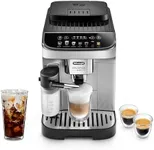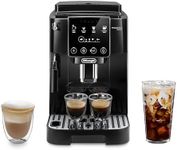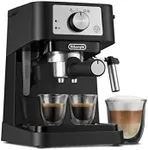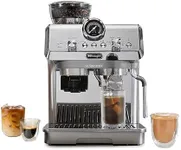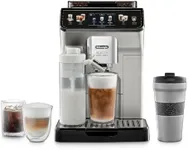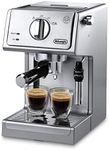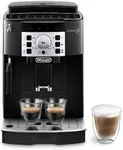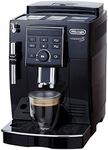Buying Guide for the Best Delonghi Espresso Machines
Choosing the right espresso machine can make a big difference in your daily coffee experience. It's important to think about how much effort you want to put into making coffee, how much space you have in your kitchen, and what kind of drinks you enjoy most. By understanding the key features of espresso machines, you can find one that matches your lifestyle and coffee preferences.Type of Machine (Manual, Semi-Automatic, Automatic, Super-Automatic)The type of espresso machine refers to how much control you have over the brewing process. Manual machines require you to do everything yourself, from grinding the beans to controlling the water flow, which is great for those who enjoy the art of making coffee. Semi-automatic machines automate some steps but still let you control the timing, making them a good balance for most home users. Automatic and super-automatic machines handle almost everything for you, from grinding to brewing, which is perfect if you want convenience and consistency. Think about how involved you want to be in making your coffee—if you love experimenting, go manual or semi-automatic; if you want quick, easy coffee, automatic or super-automatic is best.
Boiler Type (Single, Dual, Thermoblock)The boiler heats the water for brewing and steaming. Single boilers can only do one thing at a time—either brew or steam—so you have to wait between steps. Dual boilers can brew and steam at the same time, which is faster and more convenient if you make milk-based drinks often. Thermoblock systems heat water quickly and are common in compact machines, but may not be as consistent as true boilers. If you mostly drink espresso, a single boiler is fine; if you love lattes or cappuccinos, a dual boiler or thermoblock can save you time.
Pressure (Bar Pressure)Bar pressure measures how much force the machine uses to push water through the coffee grounds. Most espresso machines use 9 bars as the standard for good espresso extraction, but some advertise higher numbers. More pressure doesn't always mean better coffee; too much can lead to bitter flavors. Look for machines that offer stable, consistent pressure around 9 bars for the best results. If you want to experiment with different coffee styles, some machines let you adjust the pressure.
Milk Frothing SystemThe milk frothing system is important if you enjoy drinks like cappuccinos or lattes. Some machines have manual steam wands, which let you control the texture of the milk but require practice. Others have automatic frothers that do the work for you, making it easier to get consistent results. If you want to learn latte art or customize your milk, choose a manual wand; if you prefer convenience, an automatic frother is a better fit.
Size and Water Tank CapacityThe size of the machine and its water tank affects how much space it takes up and how often you need to refill it. Compact machines are great for small kitchens but may have smaller tanks, meaning more frequent refills. Larger machines are better for families or frequent use, as they hold more water and can make more drinks before needing attention. Consider your kitchen space and how many coffees you make each day to choose the right size.
Ease of Cleaning and MaintenanceEspresso machines need regular cleaning to keep working well and to make good-tasting coffee. Some machines have removable parts and automatic cleaning programs, making maintenance easier. Others require more manual cleaning. If you want a low-maintenance experience, look for machines with easy-to-clean designs and clear instructions. If you don't mind a bit of extra work, you can choose a machine with more manual steps.
